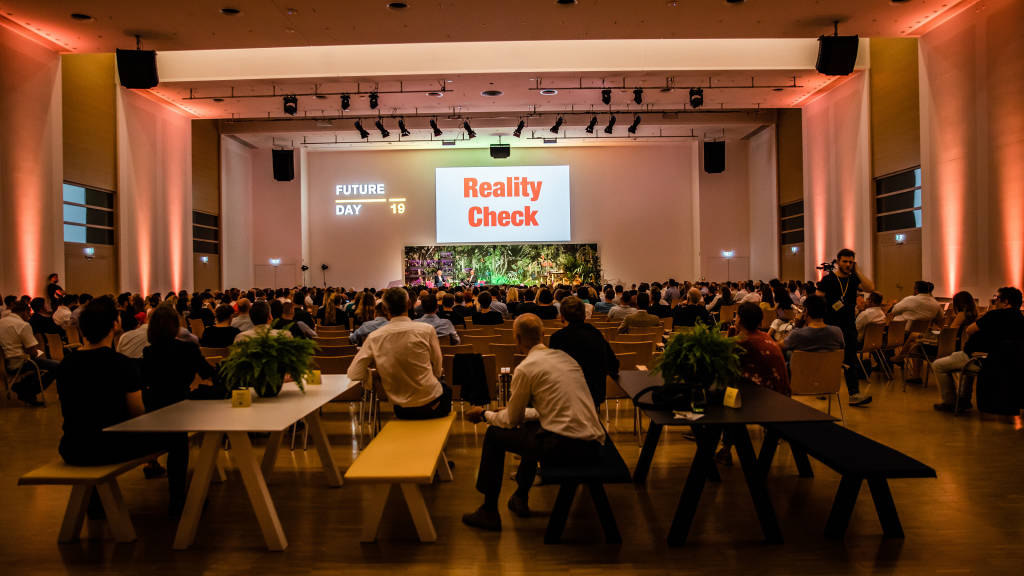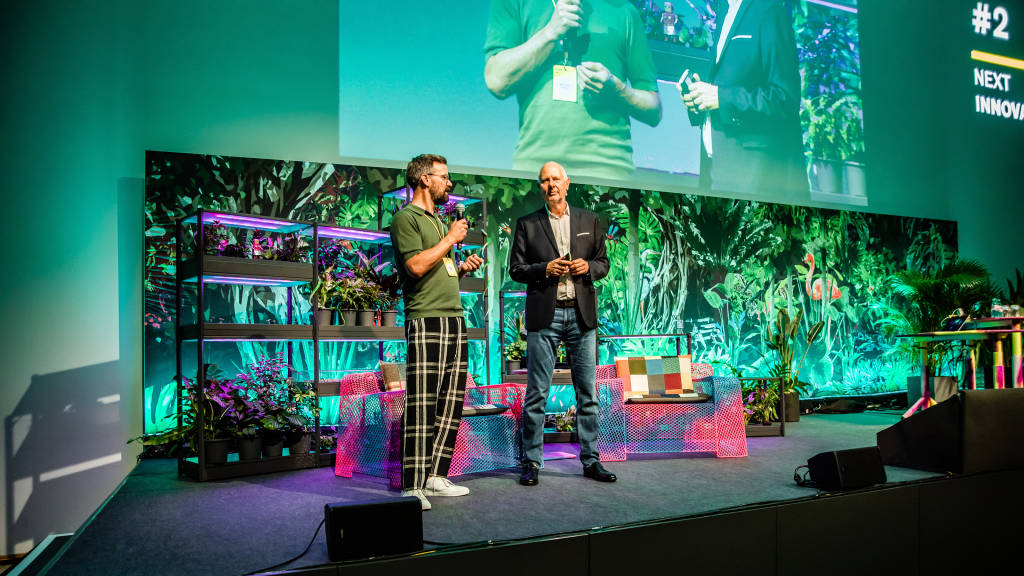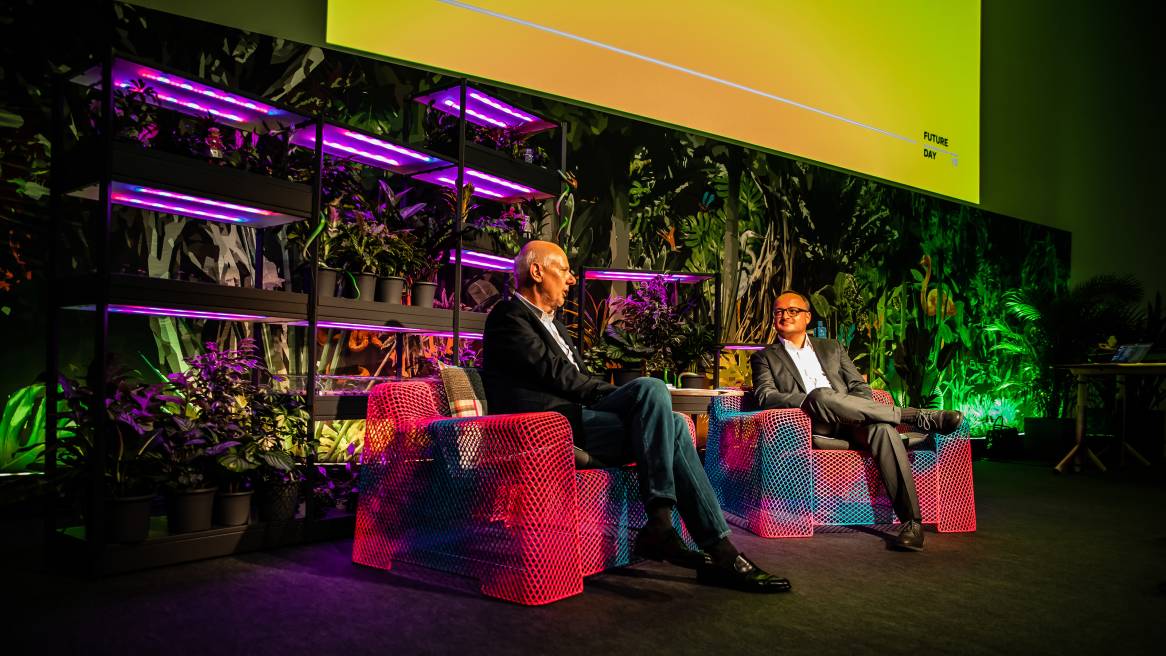Conscious Design
Reengineering discarded by-products to create a sustainable stage design
Frankfurt’s Future Day brings together over 800 futurists, strategists and progressive thinkers from across different industries, to construct and examine a macro exploration of what might come next.
This year’s theme centered around the idea of a “Reality Check”. It pushed attendees to consider where people had potentially been naïve – or maybe too radical – about forecasts of the future. And it challenged people to think about what would need to be done to succeed in the future based on what we know now.
For the past two years Michael Held, director of Global Design at Steelcase, has been asked to construct the central stage for Future Day. This year’s theme urged Held and the design team to explore the idea of retrospection as they designed the stage for 2019. To understand their final result, it helps to learn more about how they found inspiration.
They saw that constant advancements in technology, society and culture meant that newness is shorter lived than ever before. People are in continual pursuit of the next new thing – the next digital device, the next innovation, the next platform for growth, the next category disrupter.

This line of thinking led to the design team’s primary design principle: Why don’t we look back? Why don’t we pause in this continual pursuit of new, next and better? In an almost sobering sense, why aren’t we mining the past to build a more conscious future? We spend too little time focusing on the by-products of continual advancement. We don’t stop to consider the waste and decay.
Held and team drew inspiration from Rachel Armstrong, professor of Experimental Architecture at Newcastle University, who spoke as part of a Steelcase series called “In the Creative Chair” produced in the Asia Pacific region. She explored the concept of Living Architecture, an idea that buildings can share some of the properties of living systems. This helped solidify the direction for the stage design and set Held and team off to discover how they could reuse discarded parts of the Steelcase product innovation process.
In order to create the stage design for this year’s event, the team decided to reuse Steelcase by-products. The team explored discarded prototype parts and samples no longer needed. Castoff materials from seating projects were reengineered to make patchwork cushions. Obsolete shelving was brought back to life to house greenery which provided sustenance and made a positive contribution to air purity. Disused graphics were used to create the jungle inspired backdrop, which offered layers of complexity and depth – merging the natural and mechanical to create a visually arresting experience.

The team treated their waste as fertile soil and has also made plans for each of the design elements to continue to fuel future projects. As the guests took to the stage to discuss circularity, sustainability, solar energy, etc., there was a marked synchronicity and value congruence between the set and the content delivered at the event, much to the delight of both the speakers and audience.
Photo credit: dado.photo


